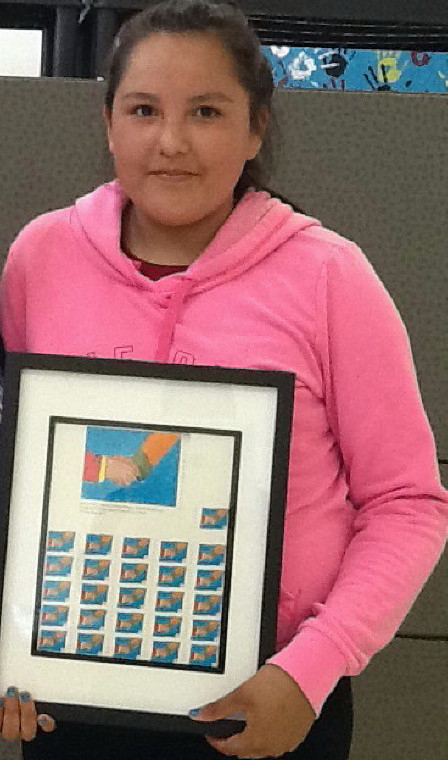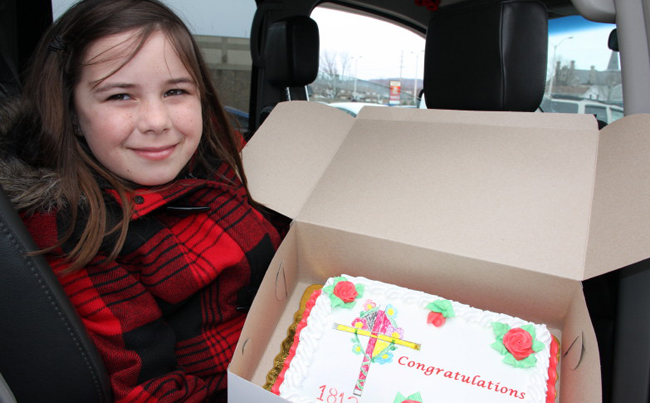Chippewa girls deliver the mail



By Sharon Weatherall
BEAUSOLEIL FN – Three Anishinabek Nation girls have had artwork depicting the War of 1812 commemorated on Canadian postage stamps.
The young ladies representing the Chippewas of Rama First Nation, Chippewas of Georgina Island, and Chippewas of Beausoleil First Nation have had artwork depicting the War of 1812 commemorated in the form of a postal stamp.
Haily Simcoe, a Grade 6 student at Mnjikaning Kendaaswin Elementary School in Rama First Nation, (RFN), Kylie Big Canoe, in Grade 4 at Waabgon Gamig First Nation School in Georgina Island First Nation, and Gracie Mixemong, in Grade 8 at Christian Island Elementary School in Beausoleil First Nation, won first prize at their respective schools in the War of 1812 Stamp Project.
The Chippewas Tri-Council of Georgina Island, Rama and Beausoleil developed a variety of projects over the past three years to honour First Nation warriors in the War of 1812. A committee developed a number of commemorative activities, including the War of 1812 Stamp Project, sponsored by the Province of Ontario. The approximate cost for commemoration pieces and 40 books of 12 stamps for each school was $620, with additional funding going towards prizes and celebrations at participating schools.
After studying the War of 1812 and the role of First Nations,students were asked to create a stamp design. Three winners were recognized at each school, the first-place winners had their designs made into real stamps which can be purchased through Canada Post.
Haily Simcoe said she was proud to represent Rama First Nation.
“My stamp has the Ojibway flower on a vine going up one side, a cross divided into the four colours ( to represent the four colours of mankind), blue to represent the waters of Lake Simcoe, and an Eagle feather to represent the Seven Grandfathers.
“We studied the War of 1812 in class and I was really impressed with the contributions – from not only First Nations people – but also our community. My grandfather taught me about the Ojibway flower and I used to draw them with him. The cross is in memory of my other grandfather who fought in the war.
“The four colours on the cross are to remind people that there are four different colors of mankind and that war affects all of them. The blue represents the water around us and the sky — a teaching I got from ‘Two Bears’. The water is sacred,and we are surrounded by Lake Simcoe and Lake Couchiching. We are surrounded by the water and sky. The gray cross in the bottom corner represents the soldiers that died — our ancestors — with the Ojibway flower still surviving.”
Kylie Big Canoe said she was really “surprised and happy” when she won and everyone at home on Georgina Island was happy for her.
“The idea for the design just popped into my mind. I am pretty good at art – my grandma always tells me that.
“My design had a cross with vines from top to bottom and some flowers and the vine made a Medicine Wheel on the cross. I thought the cross would be good because there are crosses on graves and my teacher agreed it would be good to represent the War 1812.”
Gracie Mixemong from Christian Island was proud to have had her work made into a stamp. Her design involved a handshake which was supposed to represent an agreement between First Nations and the British. People making an agreement.
“I was inspired to draw this after reading about Tecumseh and how he agreed to help the British. At that time many things were first agreed upon by a handshake.”


